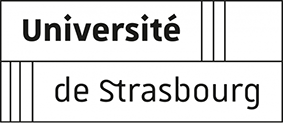Plants possess an innate immune system composed of two major layers: pathogen-associated molecular pattern (PAMP)-triggered immunity (PTI), which relies on cell surface receptors to detect conserved microbial signals, and effector-triggered immunity (ETI), which involves intracellular NLR receptors encoded by resistance (R) genes that recognize pathogen effectors or their impact on host targets. While RNA silencing has traditionally been seen as the main antiviral strategy in plants, mounting evidence shows that viral infections also activate canonical immune responses such as MAP kinase cascades, salicylic acid and ethylene accumulation, callose deposition, and transcriptional upregulation of PTI-related genes.
Recent studies by the Heinlein team at IBMP and collaborators have revealed that receptor-like kinases of the SERK family, including SERK1, BAK1/SERK3, and SERK4, are critical for antiviral immunity in Arabidopsis. Notably, viral double-stranded RNA (dsRNA), a replication intermediate and hallmark of infection, acts as a potent elicitor of PTI. This dsRNA is sensed via SERK1 and the receptor-like cytoplasmic kinase BIK1, triggering callose deposition at plasmodesmata (PD) and thereby restricting viral cell-to-cell movement.
In a new study published in New Phytologist, a research consortium led by César Llave (CIB-CSIC, Madrid), Thorsten Nürnberger (ZMBP, Tübingen), and Manfred Heinlein (IBMP) has identified members of the BAK1-INTERACTING RECEPTOR-LIKE KINASE (BIR) family as key negative regulators of antiviral defense. Specifically, BIR1 inhibits the PTI pathway that leads to PD callose deposition, while BIR3 suppresses an immune response mediated by intracellular NLR receptors. These findings suggest that BIR proteins play a central role in fine-tuning immune responses by maintaining a critical balance between activation and suppression of antiviral defenses. This modulation is essential to prevent both uncontrolled viral spread and excessive immune activation that could harm the plant.















